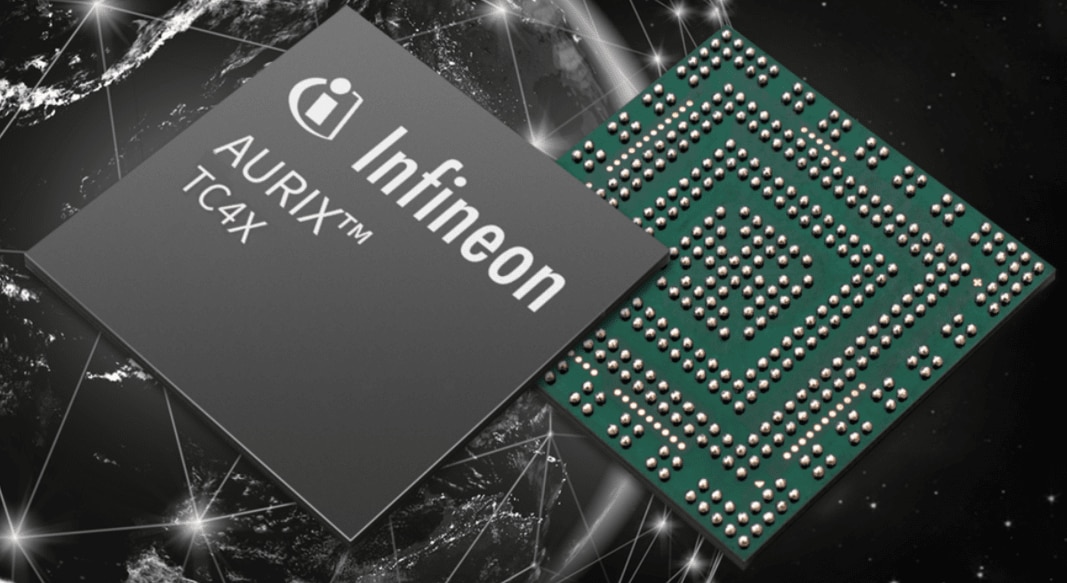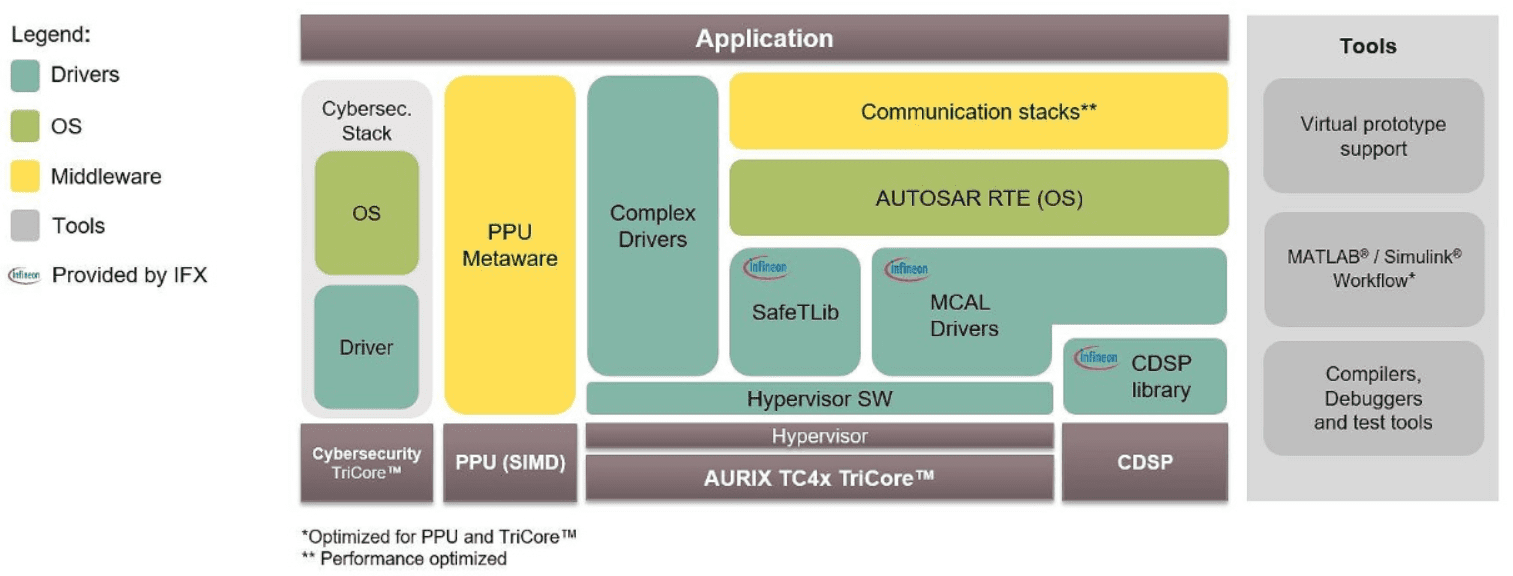The proliferation of connected vehicles has made them vulnerable to security challenges as it is hard to unite automotive and security systems in real-time. The automotive industry lacks the competence in software engineering to satisfy functional and real-time requirements. There is a shortfall of software processes as well. There is thus a need for novel procedures that can aid in reducing the complexity and simultaneously enable innovation and save cost. Infineon Technologies offers a new AURIX TC4x family of 28 nm microcontrollers (MCUs) for next-generation eMobility, ADAS, automotive electrical-electronic (E/E), and affordable artificial intelligence (AI) applications. This blog explains how this family microcontroller facilitates automotive (E/E) architectures.
The electrical/electronic architecture refers to a single integrated system that resulted from the merging of electronics hardware, wiring, network communications, and software applications. This system manages the expanding number of vehicle tasks in active safety, body and security, vehicle control, infotainment, comfort, convenience, and connectivity functionality.
The next-generation TriCore 1.8 family MCU exhibits scalable performance improvements from the AURIX accelerator suite, comprising the new parallel processing unit (PPU) and a SIMD vector digital signal processor (DSP) solves various AI topologies' demands. The MCU may encompass multiple use cases such as real-time control and radar post-processing. The scalable family concept permits standard software architecture, enabling considerable software savings.

Figure 1: AURIX TC4x family MCU (Image Source)
The AURIX TC4x targets domain and zone-based electrical/electronic architectures functional integration and other automotive applications. It supports eMobility and automated driving advancement enabled by safety systems. The AURIX TC4x provides enhanced connectivity, including advanced safety and security.
New SOTA (Software Over the Air) features help fulfill OEM demands for fast and secure car-to-cloud connection, enabling field updates, diagnosis, and analysis during vehicle usage. They support high-speed communication interfaces like 5 Gbit Ethernet and PCI Express® along with new interfaces such as CAN-XL and 10BASE T1S Ethernet. This increased network throughput and connectivity provides customers the performance and flexibility needed to implement new E/E architectures. The AURIX TC4x pushes the automotive MCU boundaries for safe and secure processing. Customers enjoy on-demand real-time performance and networking throughput due to its Smart accelerators based optimized architecture. The new MCU family establishes itself as the leading building block for future-proof systems in the automobile industry.

Figure 2: AURIX TC4x family MCU Architecture (Image Source)
Given rising vehicle complexity and accelerating AI implementations, there is considerable focus on the AURIX TC4x ecosystem to assure a quicker time-to-market and convenience. The Infineon- Synopsys collaboration accelerated software development for the AURIX TC4x family. The Synopsys Virtualizer Development Kit (VDK) for TC4x enables earlier software development in the design cycle. The Synopsys DesignWare® ARC® MetaWare Toolkit for AURIX TC4x provides optimal compilers, debuggers, and libraries as well as a simulator needed to develop software for the PPU. It helps Infineon's customers to develop AI-driven functionality in the AURIX TC4x for applications such as powertrain and ADAS processing that meet safety, performance, and power-efficiency requirements.
MATLAB support will be available for auto-code generation to enable rapid prototyping. Customers already implementing existing AURIX MCUs will profit from an accelerated time-to-market by the scalable multi-generation family concept. Significant hardware and software compatibility allows for extensive re-use of customers' existing TC3x algorithms and ecosystem.

Figure 3: AURIX TC4x Ecosystem Tools and Software (Image Source)
